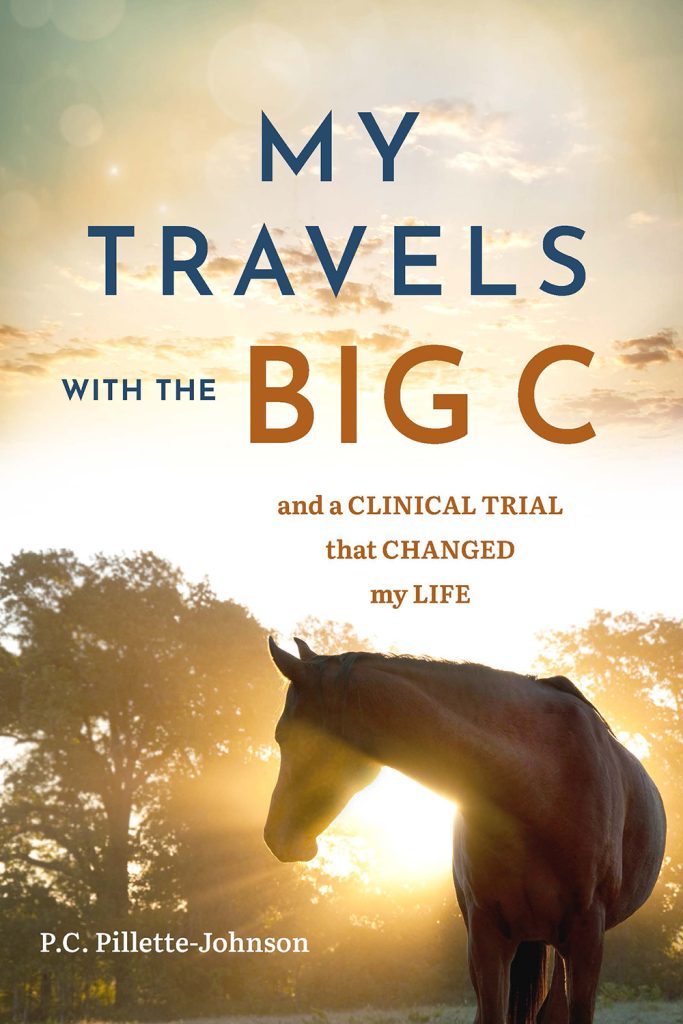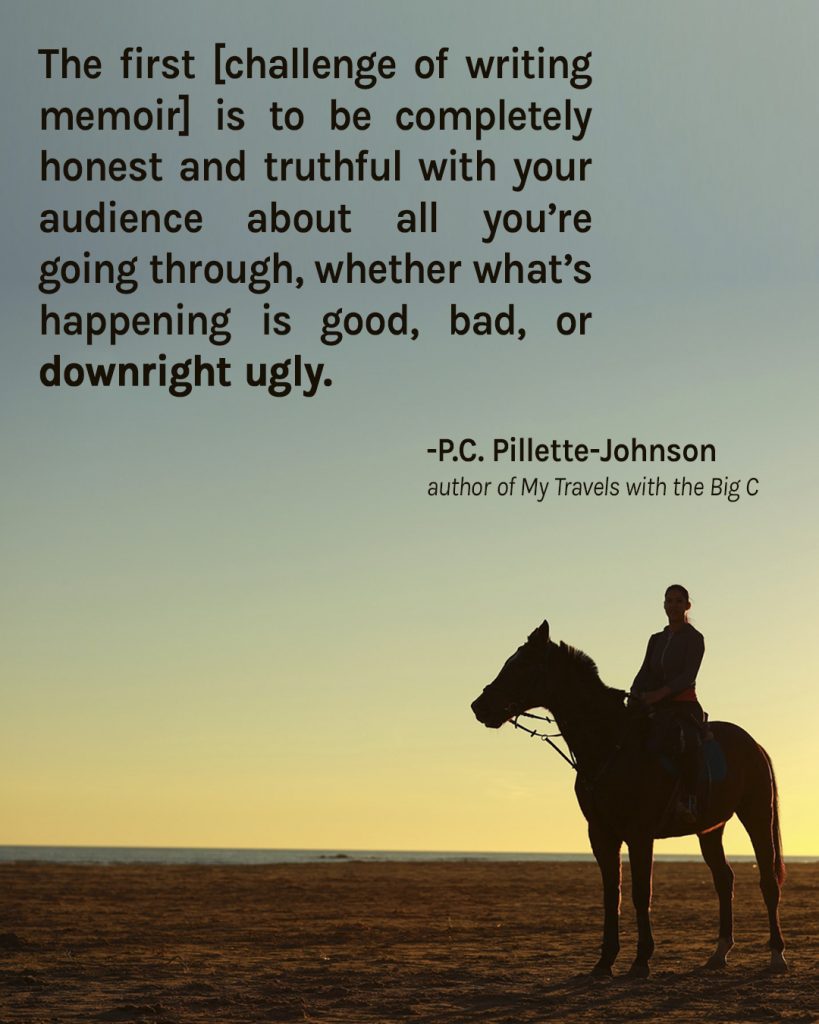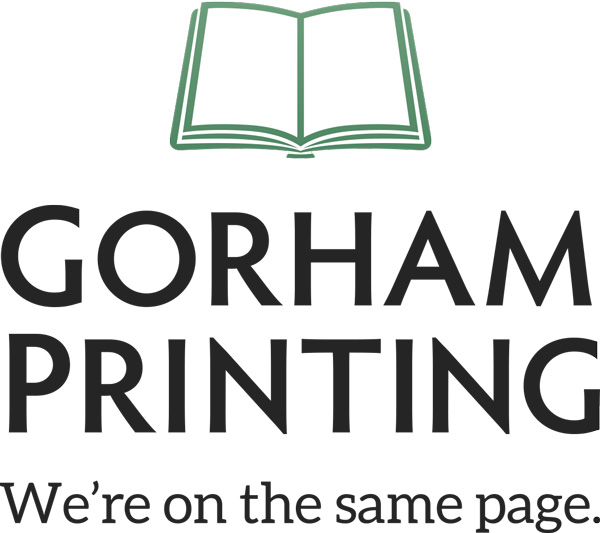Pam Johnson is a retired school teacher and author of My Travels With the Big C, a true story of one woman’s fight against cancer. After she was diagnosed with Chronic Lymphocytic Leukemia, Pam decided to participate in a clinical trial rather than standard treatment. We recently asked her about her writing and printing experience

Gorham Printing: My Travels with the Big C obviously came out of a very personal and important part of your life. What made you decide to put that into a book and share it with others?
Pam Johnson: I wanted my cancer and clinical trial experience to become a way to help others well beyond my own selfish desire to live longer. In addition, this book is a natural expression of what I want to give to my family, especially my grandchildren. It’s a unique inheritance of who I am, what I believe in, and how I view the world.
GP: How long did it take to write this book?
PJ: That’s an interesting question. I’d been thinking about such a book as MY TRAVELS ever since I was diagnosed with CLL in 2009; that’s just the way my mind works. When a significant occurrence happens in my life, I write about it. So I suppose you could say I’ve been planning and “writing” in my mind, outlining, drafting and revising this book for going on 12 years. In terms of non-stop sitting at a computer and writing this book, probably one and a half years.
GP: What are some of the unique challenges of writing a memoir?
PJ: The first unique challenge is to be completely honest and truthful with your audience about all you’re going through, whether what’s happening is good, bad, or downright ugly. Also, oftentimes I had great difficulty steering my mind away from reliving the past instead of remembering it as I wrote MY TRAVELS. Remembering doesn’t hurt as much because it keeps distance between a writer and what happens; reliving eliminates that distance and gives rebirth to old pains.

GP: My Travels with the Big C involves other people- your family, your doctors, etc. How did you involve them in the writing process? Did this create any unique challenges?
PJ: I involved them very little actually. One reason was because I worried I’d be tempted to alter the book in ways that were theirs and not mine. More importantly though is the fact that I was doing most of the writing for MY TRAVELS during the pandemic. My personal story of cancer, CLL, and a clinical trial seemed trivial in a world suffering and dying from covid, and I didn’t want to burden them with my writing process.
GP: My Travels with the Big C is the first book you’ve printed. What do you wish you knew before you started?
PJ: It’s likely this goes without saying to seasoned self-publishers, but for me I was naïve enough to think that my minimal computer/tech skills were enough to set up an Amazon Seller Account, go through the steps of listing MY TRAVELS in both Kindle and paperback version, complete the required scanning and shipping labels for the nearest Amazon Fulfillment Center, and then sit back with a well planned marketing strategy and watch sales take flight. I was wrong, totally and completely wrong. Without good friend and tech whiz, Paul Hirt, I’d still be trying to upload a pristine passport photo of myself to prove to Amazon I am who I say I am.
I failed to school myself about self-publishing, all the technical aspects of getting a book to market; this is what I wish I knew before my book went to print.
GP: How did you feel when you saw the finished book for the first time?
PJ: I pretty much felt like I did when I gave birth to my daughter, Karin. The labor was long and fraught with periods of, “What in the world was I thinking to do this!” but the finished product was worth more than a million times the struggle.
GP: What would you tell other authors who are working on memoirs involving medical care?
PJ: I’d tell other authors first to inform those caring for them of their intention to write a memoir. Very important is the taking of careful notes of all doctor visits and conversations, the keeping of a narrative journal of all happenings, researching highly credible sites for disease and treatment information, maintaining all test and procedure results, knowing the audience you’re writing for, and matching writing style to fit your readers’ needs and wants. In addition, reading other similar books for knowledge about the specific genre, and having a marketing plan that includes your website and way readers can contact you are equally valuable. And above all else, take some much needed breaks from the rigors of writing about your medical care, especially on those occasions when remembering shifts to reliving.
GP: What’s next for you? Will there be a second book?
PJ: What’s next is more writing. Presently I’m working on a book about how to improve education in our classrooms based on my 35 years of teaching. It will utilize famous movie quotes to teach 10 discipline and teaching strategies that can be easily and quickly implemented within any classroom. Brutally honest, I’ll share my own diverse classroom experiences and include humor throughout. It should be a quick, easy, and fun read.
GP: Where can readers find out more about you and your work?
PJ: Readers can find out more about me and my work by visiting my website at, pcpillette-johnson.com. Once there, they will be able to send me emails and I will gladly reply.
Writing a memoir is a unique journey, and we are glad to be a part of bringing so many memoirs to life on the printed page. If you have a story you want to tell, request a copy of our guidebook, which has book recommendations, editing suggestions, and other resources that will help you as you bring your story into the world.





Hi Colin,
I don’t know/remember if you’re the guy I first encountered two years ago when I walked into Gorham Printing to discuss with Catherine my Hubert Dielen book project. But anyways, I read your interview with Pam Johnson mentioned above. So am I now going to read her book? No, it’s not for me. I’m too busy right now reading the biography of former President Herbert Hoover. I’m currently on Volume V which deals with his presidency. After this book then I’ll have to read the final Volume VI which deals with his life after the presidency. Why so many volumes, because he’s that important in American history. He achieved a heck of a lot.
But speaking of biographies, have you had a chance to read Hubert Dielen’s memoirs/autobiography? If so, let me know since I’m always eager to get feedback from those who have and possibly give me new insights into the book. Some people notice things that I did not notice in which case I learn something new again.
That’s all for now.
Mike Reininger